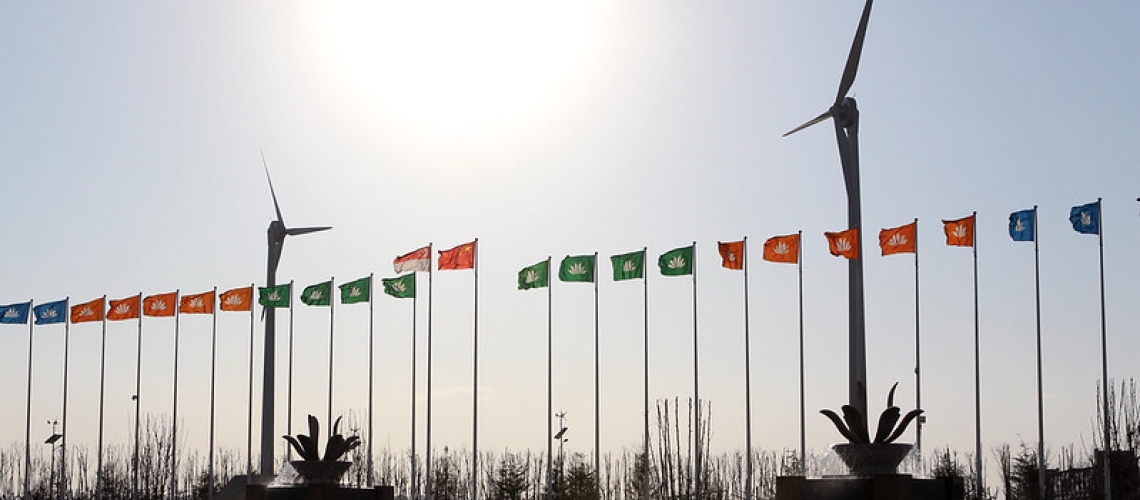To boost government productivity, policy makers should focus on the workforce first

World Bank supported Sino-Singapore Tianjin Eco-city under construction, Tianjin, China. Photo: Yang Aijun / World Bank
Human resources policies are at the center of any effort to increase government productivity. That’s why Singapore is focusing its efforts to improve efficiency on the workforce and how it carries out the business of government.
To respond to crises, and even to a world of constant change, the Singapore Public Service continuously seeks to be more competent and ready to face the future by being more proactive and forward-looking.
The government workforce of the future
In Singapore, agility, flexibility, and relevance are being built into the government workforce. A productive government gives its workers tools to respond to new challenges and deliver services effectively (for example, investments into digital transformation and Artificial Intelligence). The government must also have the ability to adapt to changing needs and contexts while remaining close to citizens. Thus, High Tech, yet remaining High Touch.
To do this, investing in training and continuous retraining of the government workforce and providing workers with future skills is crucial. Furthermore, there is a clear and constant need to innovate and to encourage the workforce to challenge the status quo, push boundaries, and use more initiatives. This can only be accomplished if bureaucratic red tape is minimized. The overarching goal is to increase productivity by achieving the fullest potential of the workforce, while ensuring its mental well-being.
Technology and people
How does this happen in practice? There are two ingredients to realizing the full potential of government productivity gains: a focus on technology and a focus on people. Digital transformation is a central way to achieve greater efficiency, by cutting time needed to accomplish tasks, making delivering government services cost effective, always citizen centric and more intuitive, while cutting back on red tape.
One way of looking to the future is by adopting the “Smart Nation” approach, a strategy centered around digitalization and digital government services. Examples include one-stop applications that deliver services to citizens, such as Life SG, Parents Gateway and OneService. This all points to a workforce that is both “high tech” and “high touch,” as the citizens’ needs are at the center of any new practices.
Goals and initiatives
Achieving greater government workforce productivity requires setting specific goals and initiatives. Policy makers should monitor the outcomes of policies affecting the workforce. They should also keep track of efforts to cut red tape. Measuring productivity, however, is always difficult. One successful example is the Million Hours Challenge, which launched in 2018 and was intended to determine how we could save precious time for both the government and the people. Mr. Chan Chun Sing, Singapore’s Minister-in charge of the Public Service, said the purpose is “to encourage ground up ideas on saving time for our fellow colleagues, or for citizens and businesses, by cutting down on bureaucracy and red tape. Collectively, we completed about 900 projects that have the potential to save more than 10 million hours in the past 3 years alone.” Constantly setting these kinds of targets is crucial to success.
Other initiatives where productivity gains could be concretely measured include the Civil Service College’s efforts to transform learning during the COVID-19 pandemic through the use of virtual classrooms, teleconferencing, as well as the LEARN app, a one-stop digital learning platform. These tools have allowed public officers to continually acquire new skills and competencies despite the pandemic. Public Service officers also could acquire skills through the Structured Job Rotation and the Talent Attachment Programme, which allows officers to hone deeper skills needed in the public sector and gaining exposure and experience through temporary assignments within government or the private sector.
To obtain gains in government productivity, policy makers must define a specific vision of an optimal future government. Then, they must realize their vision. But a great vision and sound methods are not enough. They must also measure progress on predefined goals to achieve the best results. Singapore strives to deliver on these complementary components for a more productive government, today and in the future.
